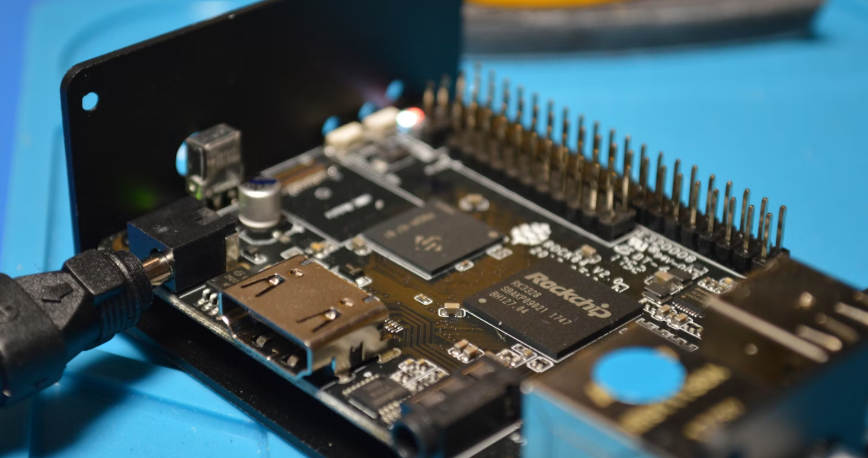Embedded code verification is a critical step in the development of medical devices. It ensures that the software controlling the device operates safely, accurately, and consistently under all expected conditions. As medical devices become increasingly software-driven, the importance of verifying embedded code cannot be overstated.
Table of Contents
In this comprehensive guide, we’ll explore the importance of embedded code verification, the challenges it addresses, and actionable strategies to implement it effectively in medical device development.
What Is Embedded Code Verification?
Embedded code verification is the process of systematically evaluating software within an embedded system to ensure it meets design requirements, functions correctly, and adheres to regulatory standards. This process involves analyzing and testing the code to identify and eliminate bugs, ensuring the device operates as intended.
1. Why Embedded Code Verification Matters
Ensures Patient Safety
Medical devices often operate in life-critical environments. Errors in embedded code can lead to device malfunctions, jeopardizing patient safety.
Meets Regulatory Requirements
Regulatory bodies like the FDA and ISO require thorough verification of embedded software to approve medical devices. Non-compliance can lead to delays, fines, or product recalls.
Improves Device Reliability
Verification identifies vulnerabilities, reducing the likelihood of software crashes or unexpected behavior in real-world usage.
2. Challenges in Embedded Code Verification
Ensuring reliable embedded code in medical devices involves tackling several significant challenges. As these devices become more software-intensive and interconnected, the complexity of verification grows, requiring robust strategies to address inherent hurdles.
1. Complexity of Embedded Systems
Modern medical devices integrate multiple systems, including sensors, actuators, processors, and communication modules, all controlled by embedded software. These complexities create several challenges:
- Hardware-Software Interactions: Verifying the code’s behavior when interacting with hardware components can uncover unexpected dependencies or conflicts.
- Concurrency Issues: Real-time operating systems often run multiple tasks simultaneously, requiring verification of thread safety and proper resource management.
- Interoperability Testing: Medical devices must work seamlessly with other devices and systems (e.g., electronic medical records or diagnostic tools). Verifying compatibility across diverse setups increases complexity.
Example: A wearable ECG monitor must synchronize data with cloud systems and mobile apps while maintaining real-time accuracy—verifying these interactions demands rigorous testing across multiple platforms.
2. Resource Constraints
Embedded code verification is inherently resource-intensive, often stretching the capabilities of MedTech startups or smaller teams.
- Specialized Expertise: Verifying embedded software requires niche expertise in software development, hardware integration, and testing methodologies.
- Tooling Costs: Advanced tools for static and dynamic analysis, simulation, and automated testing can be prohibitively expensive.
- Time Constraints: Verification often overlaps with tight project timelines, leading to a trade-off between thorough testing and meeting launch schedules.
Example: A startup developing a portable insulin pump might lack the budget to invest in automated test suites, forcing manual testing, which is less efficient and more prone to oversight.
3. Dynamic Environments
Medical devices often operate in unpredictable, dynamic environments, presenting unique verification challenges:
- Variable Operating Conditions: Temperature fluctuations, electromagnetic interference, and power disruptions can affect software performance.
- Real-World User Scenarios: Patients may use devices in ways that were not anticipated during development, such as wearing a device incorrectly or using it under extreme conditions.
- Evolving Use Cases: Devices deployed in clinical settings might face additional, unforeseen requirements, such as integration with newly adopted hospital systems.
Example: A diagnostic imaging device used in rural clinics may encounter inconsistent power supply and temperature extremes, requiring exhaustive testing to simulate such conditions.
4. Regulatory Scrutiny
Medical devices are subject to strict regulatory oversight to ensure safety and reliability. Software verification plays a crucial role in meeting these requirements but adds significant complexity:
- Compliance with Standards: Standards like IEC 62304 (software lifecycle processes) and ISO 14971 (risk management) impose detailed requirements for design, implementation, and verification.
- Documentation Burden: Comprehensive documentation of all verification activities is essential for regulatory submissions and audits.
- Iterative Reviews: Regulators often request additional clarifications or iterations, extending the verification timeline.
Example: Submitting an FDA 510(k) for a Class II device with embedded software requires extensive documentation, including test protocols, results, and code reviews. Any gap can delay approval or trigger further scrutiny.
Overcoming the Challenges
Addressing these challenges requires a strategic approach:
- Leverage Automation: Use automated tools for static analysis, regression testing, and simulation to reduce resource demands.
- Focus on Modular Design: Break software into smaller, testable modules to simplify verification and isolate potential issues.
- Iterative Testing: Conduct testing at every development stage to identify and address issues early.
- Engage Regulatory Experts: Collaborate with compliance consultants to streamline documentation and anticipate regulator concerns.
- Real-World Simulations: Use hardware-in-the-loop (HIL) and fault injection testing to mimic dynamic environments.

By proactively addressing these challenges, MedTech companies can ensure their devices meet safety standards, perform reliably in diverse settings, and achieve faster regulatory approval.
3. Steps in Embedded Code Verification
1. Requirements Analysis
Define clear and testable requirements for the software. This ensures verification tests align with the intended functionality of the device.
2. Static Code Analysis
Examine the code without executing it to identify syntax errors, security vulnerabilities, and compliance with coding standards.
Tools: SonarQube, Polyspace.
3. Dynamic Testing
Execute the code in real or simulated environments to assess performance under various conditions.
Key Tests Include:
- Unit Testing: Validates individual software components.
- Integration Testing: Ensures different modules work together.
- System Testing: Confirms overall system behavior.
4. Model-Based Testing
Use mathematical models to simulate device behavior and verify that the code adheres to the model.
5. Code Coverage Analysis
Measure the percentage of code exercised during testing to identify untested paths and improve coverage.
6. Fault Injection Testing
Deliberately introduce faults to test the system’s response and ensure robust error-handling mechanisms.
7. Documentation and Reporting
Maintain detailed records of verification activities to demonstrate compliance during audits and regulatory reviews.
4. Best Practices for Effective Embedded Code Verification
1. Adopt Industry Standards
- Follow IEC 62304 for software lifecycle processes.
- Use MISRA standards for coding guidelines.
2. Automate Where Possible
Automated tools can speed up verification, reduce human error, and improve consistency.
Examples: Jenkins for CI/CD pipelines, automated regression testing tools
3. Conduct Peer Reviews
Have cross-functional teams review code and verification results to identify gaps and improve quality.
4. Simulate Real-World Scenarios
Use hardware-in-the-loop (HIL) testing to simulate real-world operating conditions and interactions.
5. Prioritize High-Risk Areas
Focus resources on software components that pose the greatest risk to safety or functionality.
5. Tools and Technologies for Embedded Code Verification
Static Analysis Tools
- Polyspace: Ensures compliance with safety-critical standards.
- Coverity: Identifies and resolves vulnerabilities in the codebase.
Dynamic Testing Tools
- VectorCAST: Supports automated testing for embedded software.
- Cantata: Simplifies unit and integration testing for safety-critical systems.
Model-Based Tools
- Simulink: Integrates model-based design and verification for embedded systems.
- QGen: Supports model-based development with code generation and verification.
6. Regulatory Considerations
FDA Guidance
The FDA emphasizes the need for software validation, including design verification and validation activities. Submissions must include evidence of these activities, such as test plans and results.
IEC 62304
This international standard outlines a framework for the software development lifecycle of medical devices. Verification is a mandatory phase to ensure software safety and effectiveness.
ISO 14971
Risk management for medical devices includes identifying potential software risks and mitigating them through verification and validation.
7. Benefits of Embedded Code Verification
Improved Device Safety
Verification identifies potential issues early, reducing the risk of device failure and improving patient outcomes.
Faster Regulatory Approvals
Thorough verification and well-documented processes expedite regulatory reviews.
Cost Savings
Finding and fixing software bugs during the development phase is significantly less expensive than addressing issues post-market.
8. Future Trends in Embedded Code Verification
AI and Machine Learning
AI-powered tools can predict potential code failures and optimize testing efforts.
Real-Time Monitoring
Embedded systems with self-monitoring capabilities can report anomalies for ongoing verification.
DevOps in Medical Devices
Integrating verification into DevOps pipelines ensures continuous testing and faster iteration.

Conclusion
Embedded code verification is essential for developing reliable, compliant, and high-performing medical devices. By following best practices, leveraging advanced tools, and adhering to regulatory standards, medical device manufacturers can ensure their products meet the highest safety and quality standards.
For a deeper dive into medical device engineering and its role in commercialization, check out this comprehensive guide on optical medical device development. It explores practical strategies to bring innovative devices to market effectively.
Whether you’re developing wearable health trackers, robotic surgical systems, or diagnostic tools, a robust embedded code verification process is critical to success.
Are you ready to strengthen your embedded code verification process? Let’s collaborate to optimize your approach and ensure reliable device performance.



